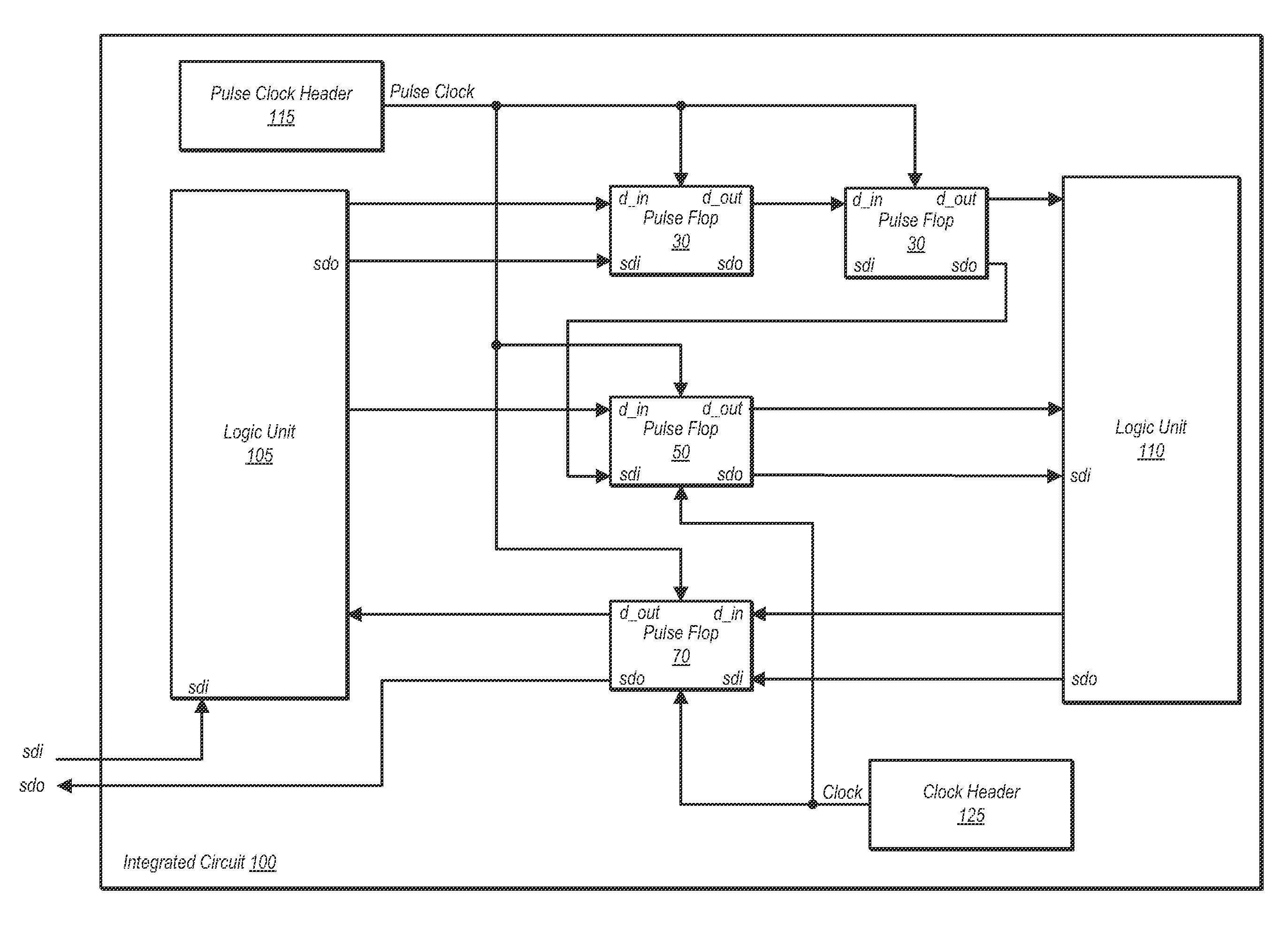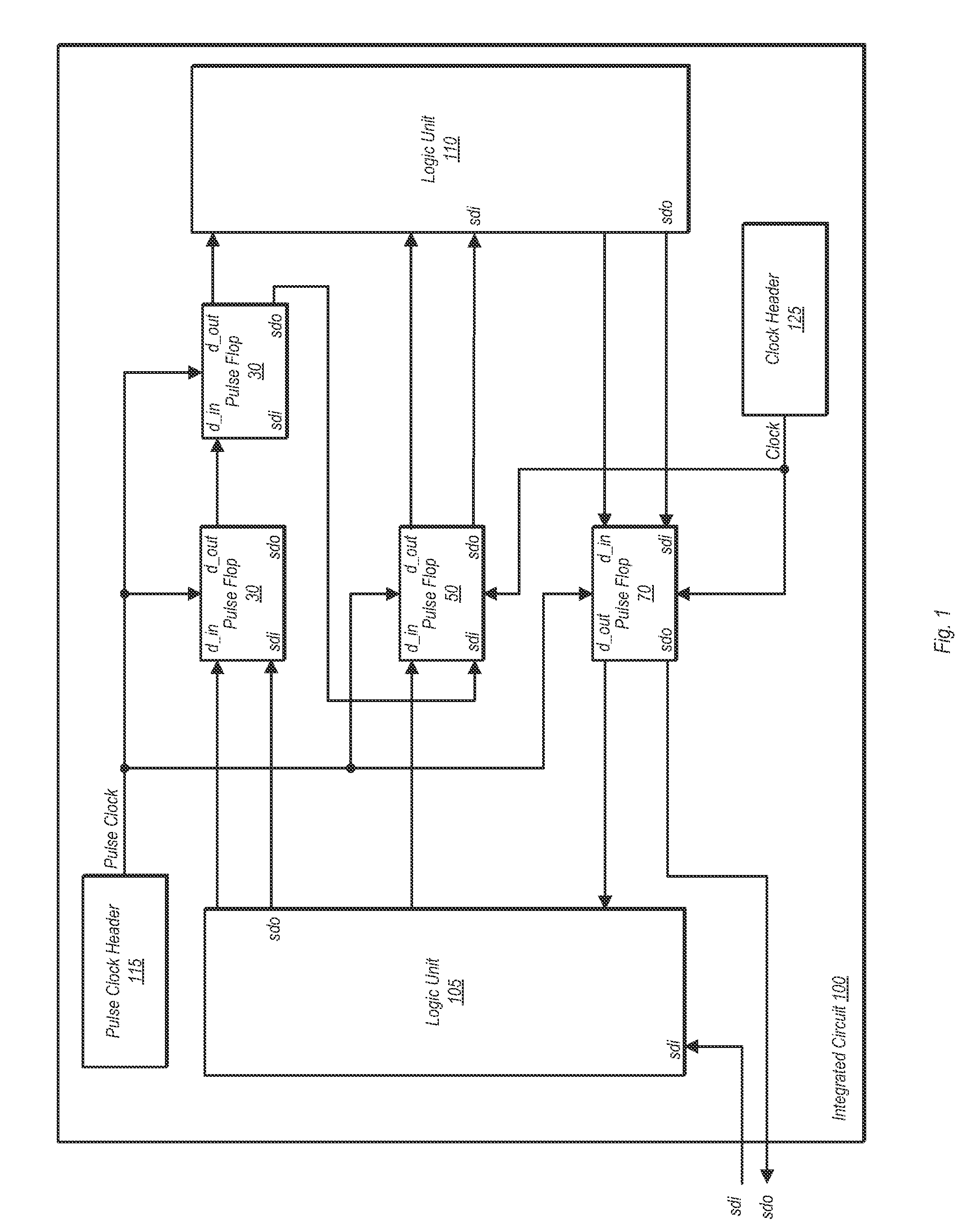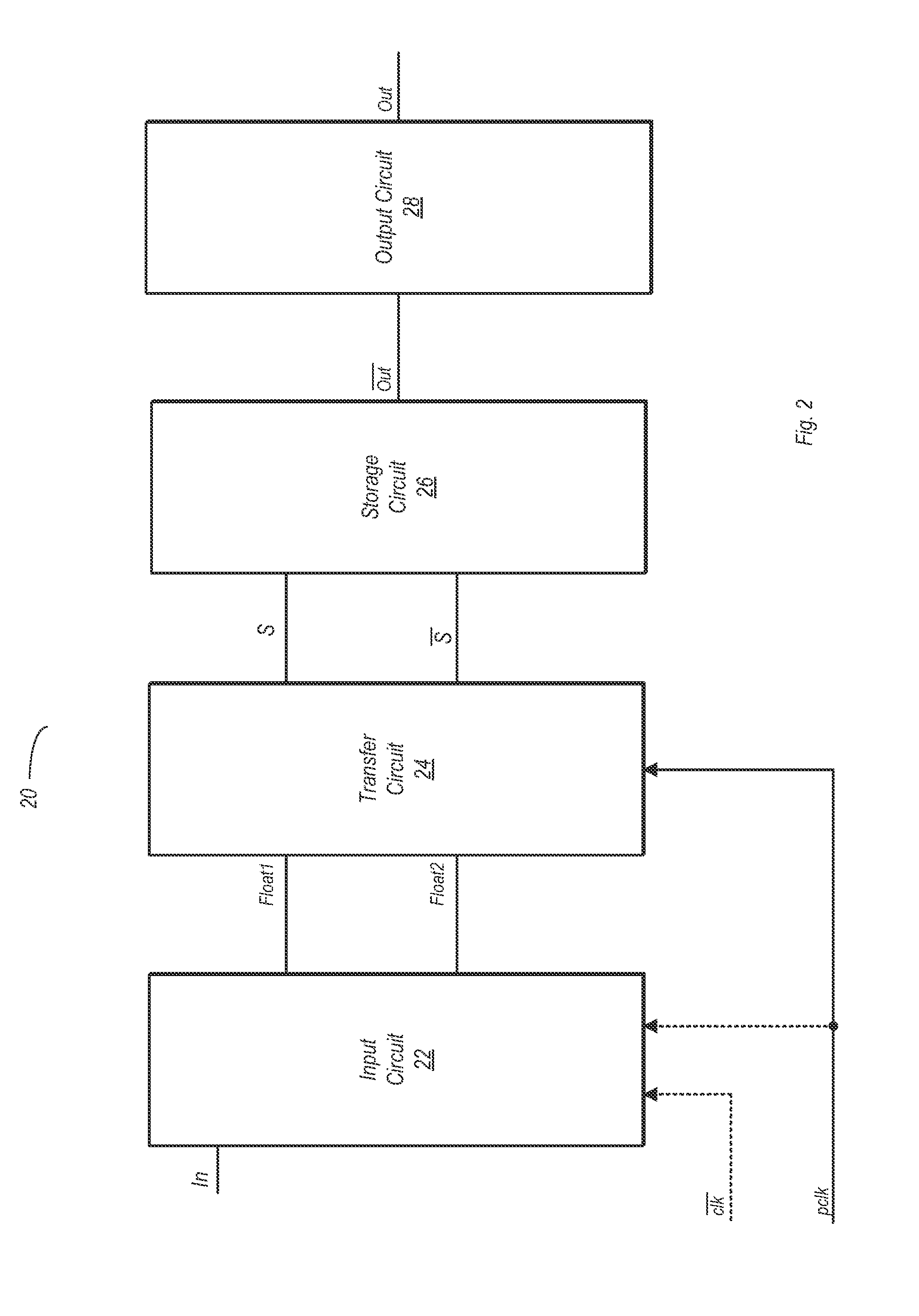Flop type selection for very large scale integrated circuits
a technology of integrated circuits and flop types, applied in the field of electronic circuits, can solve problems such as min-time problems, subject to race conditions, and give rise to certain limitations
- Summary
- Abstract
- Description
- Claims
- Application Information
AI Technical Summary
Benefits of technology
Problems solved by technology
Method used
Image
Examples
Embodiment Construction
Overview:
[0025]The present disclosure is directed to a method of determining flop types (e.g., master-slave flip-flop or pulse flop) for certain flop circuits in an integrated circuit (IC) design. As used herein, the term flop circuit (or flop) may refer to one of several different types of storage circuits, including master-slave flip-flops, pulse flops, and latches that are otherwise not part of the former two circuits.
[0026]While some flop circuits in an IC design may be designated as master-slave flip-flops or pulse flops early in the design process, others are sometimes not easily designated as one or the other. As will be explained in further detail below, flops that are designated as non-critical may be implemented as master-slave flip-flops, while those designated as frequency limiters (or ‘F-limiters’) may be implemented as pulse flops. Flops of a third category, designated here as critical flops, are sometimes difficult to determine whether best implemented as a master-sla...
PUM
 Login to View More
Login to View More Abstract
Description
Claims
Application Information
 Login to View More
Login to View More - R&D
- Intellectual Property
- Life Sciences
- Materials
- Tech Scout
- Unparalleled Data Quality
- Higher Quality Content
- 60% Fewer Hallucinations
Browse by: Latest US Patents, China's latest patents, Technical Efficacy Thesaurus, Application Domain, Technology Topic, Popular Technical Reports.
© 2025 PatSnap. All rights reserved.Legal|Privacy policy|Modern Slavery Act Transparency Statement|Sitemap|About US| Contact US: help@patsnap.com



